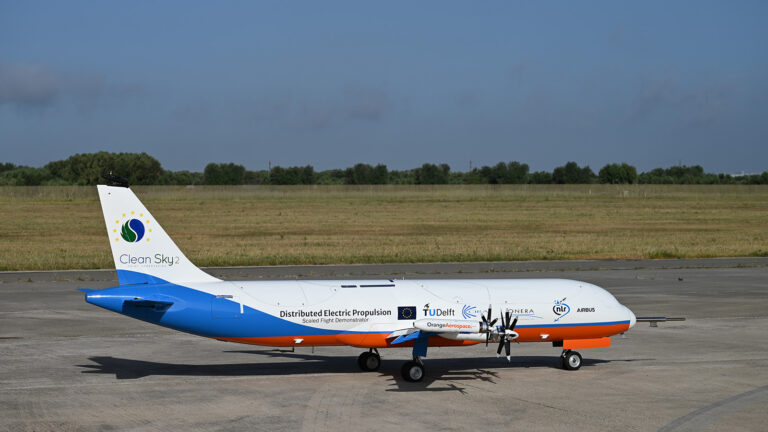Stay Up to Date
Submit your email address to receive the latest industry and Aerospace America news.
The Electrified Aircraft Technology Technical Committee supports the integration of electrified aircraft systems through the design, evaluation and application of key technologies, including components for propulsion, actuation, safety, airworthiness and thermal management.
The year’s milestones in electrified aviation technologies included advances in high-power electrical systems, first flights of various novel aircraft concepts and committed support from industry and government stakeholders to continue developing electric flight technologies.
In January, the Airbus ZEROe team announced the first powered tests of its 1.2-megawatt powertrain, comprised of hydrogen fuel cells and an electric power system representative of one that could be installed on a fully electric airliner, one of four hydrogen concepts the company is evaluating for its next passenger plane. Also in January, Electra of Virginia surpassed 2,000 preorders for its hybrid-electric short takeoff and landing aircraft, which the company unveiled in November. In April, U.S. Navy and U.S. Army announced new awards in Electra to further refine the company’s concept.
In March, FAA issued a light-sport aircraft airworthiness exemption for the Pipistrel Velis Electro, permitting the battery-electric aircraft to begin flight training activities within the U.S. Later that month, Pipistrel announced it had constructed its 100th Velis Electro. In May, New Vision Aviation, a flight school in the San Joaquin Valley of California, began flight training with the Velis Electro, the first such program in the U.S.
In April, NASA and magniX of Washington completed the first phase of testing in NASA’s Electric Aircraft Testbed facility in Ohio through the Electrified Powertrain Flight Demonstration project. Tests of magniX’s electric engine were conducted to qualify powertrain components under simulated high-altitude flight conditions, varying ambient temperatures, and high power levels. magniX is retrofitting a De Havilland Dash 7 with the powertrain for flight demonstrations, planned for 2026.
Also in April, ZeroAvia announced the opening of a new facility in Everett, Washington, for the production of the firm’s hydrogen-electric propulsion systems and research and development operations.
May marked the first flight of a distributed electric propulsion demonstrator developed under the European Union Clean Sky 2 research program. The remotely piloted subscale aircraft has a wingspan of 4 meters, a takeoff mass of 167 kilograms and a cruise speed of 100 knots. The objective of the flight test campaign is to explore the potential of distributed electric propulsion for large commercial aircraft to enhance performance and control.
In July, Joby Aviation of California conducted the first flight of its hydrogen-electric technology demonstrator. The vertical takeoff and landing aircraft flew 523 miles (842 kilometers), propelled by a liquid hydrogen and fuel-cell system developed by Joby subsidiary, H2FLY. This flight test marked a dramatic increase in range capability for electric propulsion, relative to previous flights Joby has conducted with its battery-electric prototypes.
This year also saw the introduction of several new fully electric aircraft concepts configured to serve commercial markets. In January at AIAA’s SciTech Forum, Dutch startup Elysian Aircraft unveiled its concept for a regional aircraft intended for 90-passenger flights up to 500 miles (805 km). This E9X concept features distributed propulsion, with eight electrically driven propellers mounted across the wing, which at 138 feet (42 meters) would be substantially larger than incumbent aircraft for this market. In March, Whisper Aero of Tennessee revealed its Whisper Jetliner, a 100-passenger aircraft intended to serve markets up to 769 miles (1,238 km). The aircraft features electric ducted fans distributed across the wings’ leading edges to enhance the high-speed lift to drag performance.
Contributors: Reynard de Vries, Maurice Hoogreef and Virginia Stouffer
Stay Up to Date
Submit your email address to receive the latest industry and Aerospace America news.




